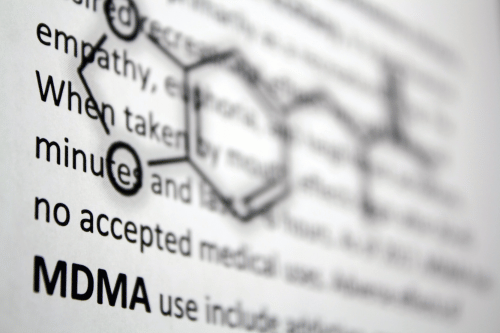Is Molly Addictive?
Molly, a common street name for MDMA, is a synthetic drug known for its stimulant and hallucinogenic effects. Frequently marketed as a pure form of MDMA, Molly has become a popular party drug, particularly among young adults at raves, festivals, and clubs.
As a ‘club drug,’ it gained popularity in social settings like raves, festivals, and clubs, where it is often used for its euphoric effects. However, beneath its reputation as a “fun” drug lies the very real risk of addiction and harmful consequences. This article dives deep into the question: is Molly addictive, and if so, what makes it so dangerous?
Understanding Molly as a Club Drug and Its Effects
Molly, or ecstasy, is typically consumed in colorful tablets, powder form, or sometimes in capsules. As an illicit drug, it carries significant legal and health risks, including potential addiction and severe mental health issues. The drug is known for creating intense feelings of euphoria, increased energy, emotional warmth, and a distorted sense of time and space. Users often report feeling more sociable and empathetic under the influence, making it a popular choice for social gatherings and parties.
However, these short-lived effects are caused by the drug’s manipulation of neurotransmitters in the brain—specifically serotonin, dopamine, and norepinephrine. The release of large amounts of serotonin causes mood elevation and feelings of closeness, but it also depletes serotonin levels, leading to the negative consequences that often follow a night of Molly use, such as depression, anxiety, and irritability. These symptoms can lead to a cycle of repeated use as individuals seek to escape these feelings, which is a key pathway to addiction.
The Addictive Potential and Physical Dependence of Molly
The central question remains: is Molly addictive? The answer is yes. Although Molly is not considered as addictive as some other controlled substances like opioids, cocaine, or methamphetamine, it still carries a significant risk of addiction, particularly when compared to other addictive drugs.
Addiction to Molly typically begins with the development of tolerance. As individuals continue using the drug, they often need to take higher doses to achieve the same euphoric effects they initially experienced. This can lead to physical dependence, a state where the body becomes accustomed to the presence of the drug and experiences withdrawal symptoms when it is not available. These symptoms can include severe fatigue, depression, anxiety, and cravings, making it challenging to stop using without professional help.
Molly is classified as a Schedule I controlled substance, highlighting its high potential for abuse and lack of accepted medical use.
Physical dependence is closely linked to the development of a substance use disorder (SUD). The Diagnostic and Statistical Manual of Mental Disorders (DSM-5) outlines the specific criteria for diagnosing substance use disorders, including ecstasy use disorder. When someone finds themselves compulsively using Molly despite negative consequences in their life—whether social, financial, or health-related—they are likely suffering from a substance use disorder.

Substance Use Disorder and Molly
Substance use disorder is a chronic condition characterized by the compulsive use of a substance despite harmful effects. For those using Molly, the risk of developing an SUD is significant. What begins as occasional recreational use can quickly spiral into dependence and addiction as the brain becomes conditioned to seek out the euphoric effects of the drug. Over time, this leads to changes in brain chemistry that make it difficult for individuals to feel pleasure or satisfaction without the drug.
Drug abuse, particularly with substances like Molly, can lead to addictive behaviors and physical dependence. According to the National Institute on Drug Abuse, prolonged use can result in psychological withdrawal symptoms, highlighting the complexity of substance use disorders and the importance of seeking professional help for those struggling with addiction.
Young adults are particularly susceptible to developing a substance use disorder related to Molly. The combination of social pressure, curiosity, and the false perception that Molly is a “safe” or “pure” drug contributes to its widespread use in party scenes. The allure of a heightened sensory experience often masks the potential for long-term harm, making it crucial for adolescents and their parents to understand the real risks involved.
The Dangers of Molly Addiction and Ecstasy Overdose
Addiction to Molly is not just about the loss of control over drug use—it also comes with severe health risks. The stimulating effects of the drug can lead to reckless behavior, such as unsafe sexual activities, driving under the influence, or engaging in aggressive or risky actions. Moreover, since Molly is often mixed with other substances like synthetic cathinones (commonly known as “bath salts”), users may be unknowingly consuming dangerous chemicals that amplify the drug’s toxicity. Abuse ecstasy can lead to the development of a substance use disorder, with significant legal and health risks, including the danger of overdosing on unregulated substances containing harmful substitutes like PMA.
One of the most significant risks associated with Molly use is the potential for ecstasy overdose. Symptoms of an overdose include extreme agitation, high blood pressure, increased body temperature, muscle tension, panic attacks, and in severe cases, kidney failure or fatal overdose. These risks are further exacerbated when Molly is taken in combination with other drugs or alcohol. Ecstasy overdose is a life-threatening emergency that requires immediate medical intervention. Recognizing ecstasy addiction is crucial, and treatment options such as cognitive behavioral therapy are available to help individuals struggling with this specific substance use disorder.
Another critical aspect to consider is the long-term impact on mental health. Chronic use of Molly can lead to lasting changes in brain chemistry, contributing to persistent mental health disorders such as anxiety, depression, and even memory impairment. Users may find themselves struggling with emotional instability, which can significantly affect their quality of life and relationships.

Treatment for Molly Addiction
Recovering from Molly addiction is possible, but it often requires a comprehensive treatment plan that addresses both the physical and psychological aspects of the disorder. Treatment typically begins with detoxification under medical supervision to safely manage withdrawal symptoms. During detox, individuals may experience strong cravings, mood swings, and sleep disturbances, which are common withdrawal symptoms associated with ecstasy use.
The Drug Enforcement Administration classifies Molly as a Schedule I controlled substance, indicating a high potential for abuse and no accepted medical use. This classification has significant legal implications for its use and possession.
Once the acute phase of withdrawal is managed, long-term treatment strategies can include behavioral therapies such as cognitive-behavioral therapy (CBT). CBT helps individuals identify and change the thought patterns and behaviors that contribute to their drug use. Therapy can also address co-occurring mental health disorders, which are common among individuals with substance use disorders.
Support from reputable institutions, such as American Addiction Centers, can be invaluable during recovery. These centers offer a range of services, including group therapy, individual counseling, and aftercare planning to help individuals maintain sobriety. Additionally, some programs may focus specifically on adolescents, offering age-appropriate care that considers the unique challenges young adults face when dealing with addiction.

Prevention and Education
Preventing Molly addiction starts with education and awareness. Adolescents and young adults need to be informed about the real dangers of this drug, beyond its reputation as a party enhancer. Parents, educators, and community leaders can play a crucial role in spreading awareness and fostering environments that discourage substance abuse. Initiatives like open dialogues about the risks associated with club drugs and the promotion of healthy coping strategies for stress and peer pressure can help reduce the prevalence of Molly use.
Conclusion
Molly is an addictive drug with serious, sometimes fatal consequences. While it may seem like a harmless way to enhance social experiences, the potential for addiction, overdose, and long-term mental health issues cannot be ignored. Substance use disorders related to Molly are real, and the impact on young lives can be devastating. If you or someone you know is struggling with Molly addiction, seeking professional help is essential. With the right treatment, recovery is within reach, allowing individuals to break free from the cycle of addiction and rebuild their lives.
This in-depth examination of Molly’s addictive nature provides the information necessary to recognize the dangers and take proactive steps toward prevention and treatment. If you need more guidance or resources, reach out to professionals who specialize in adolescent mental health and substance use disorders.










